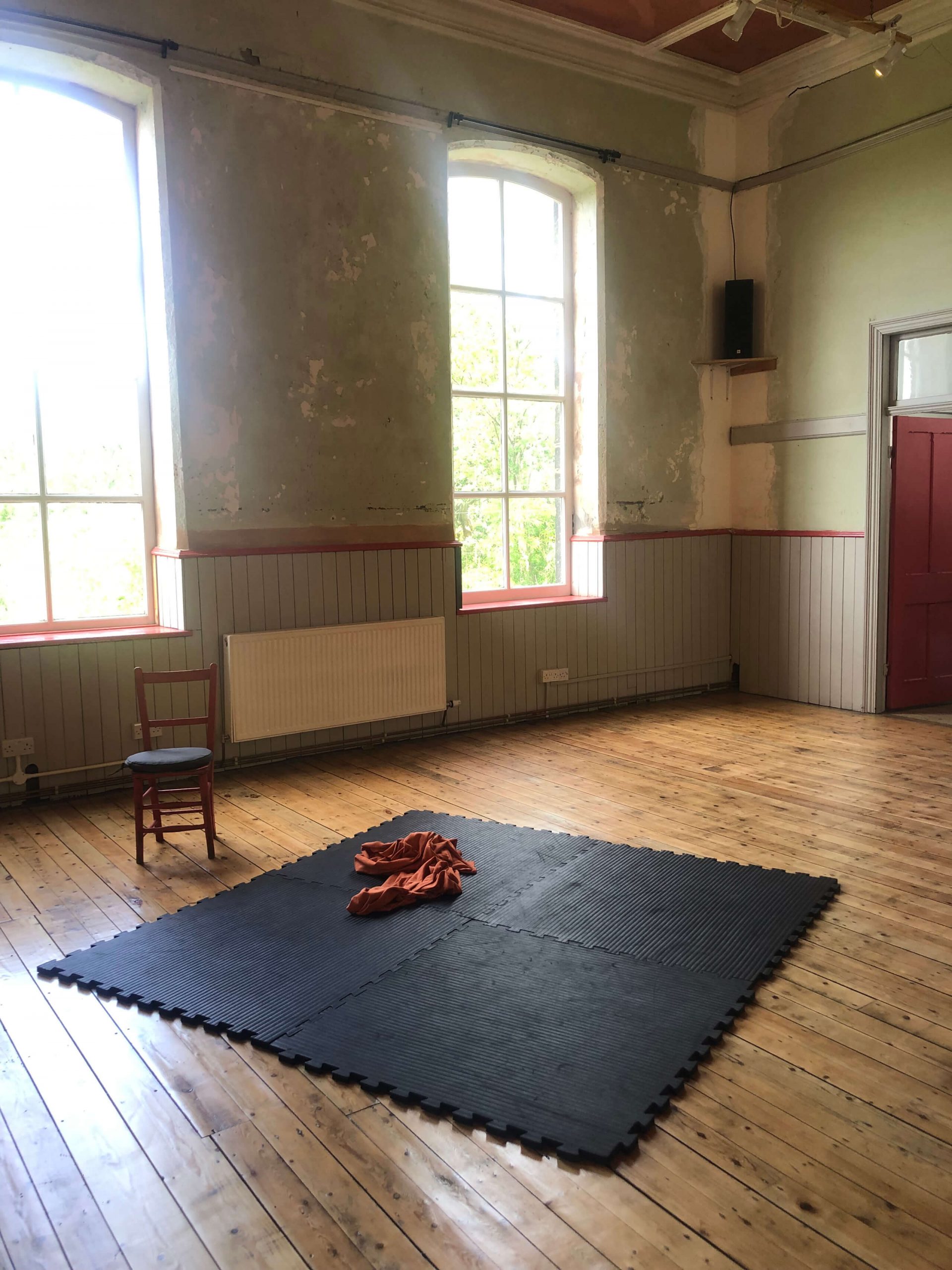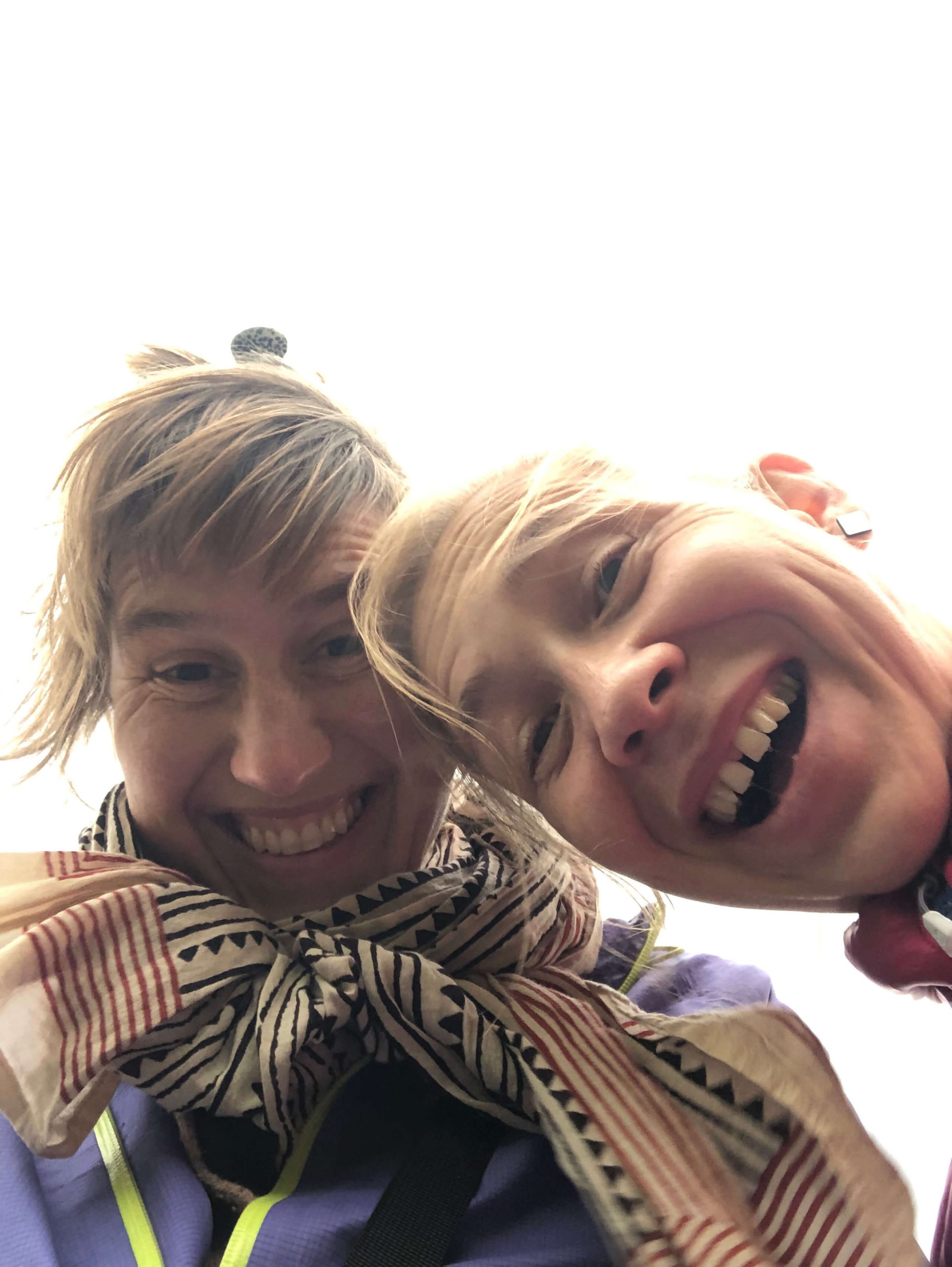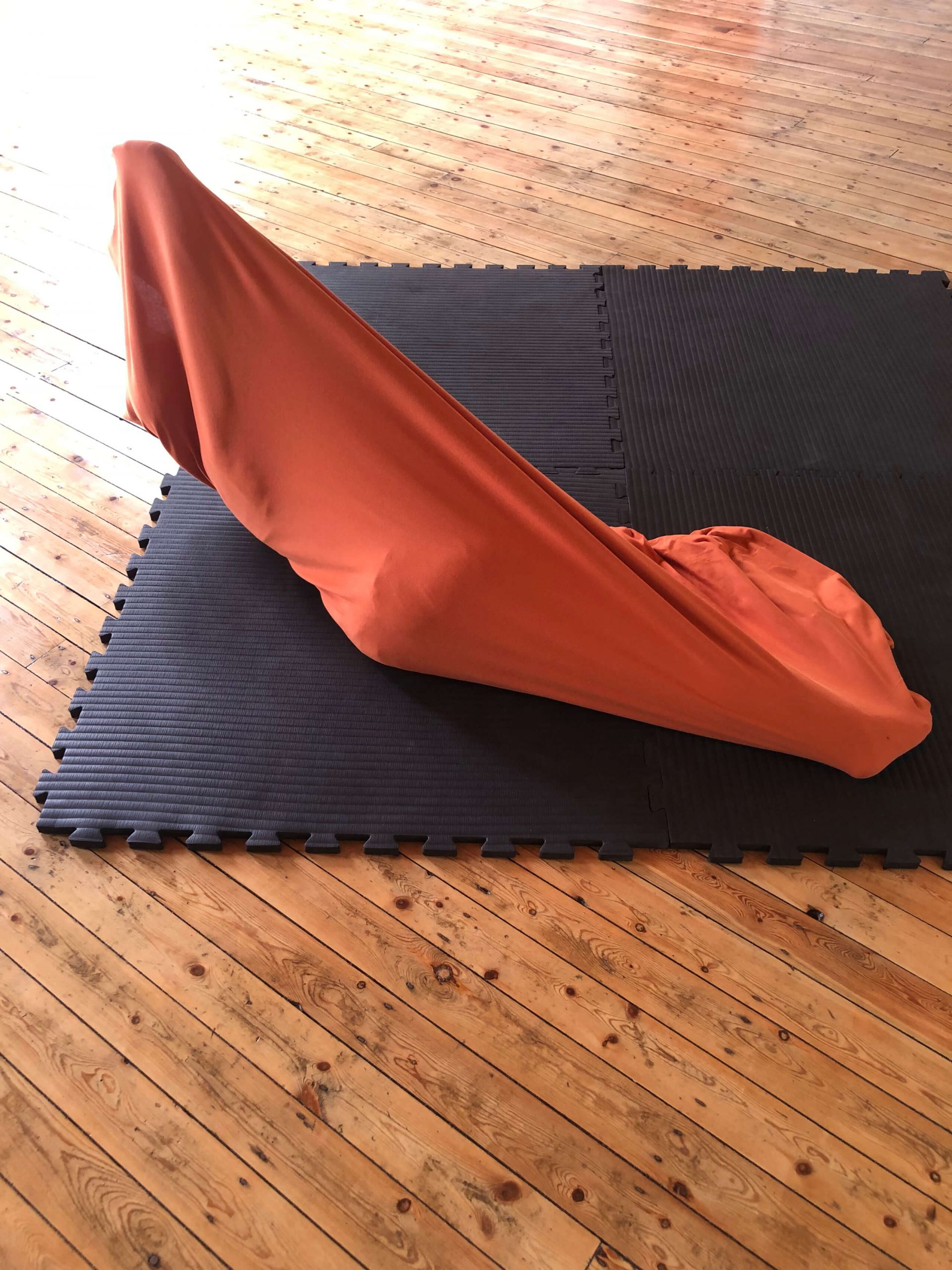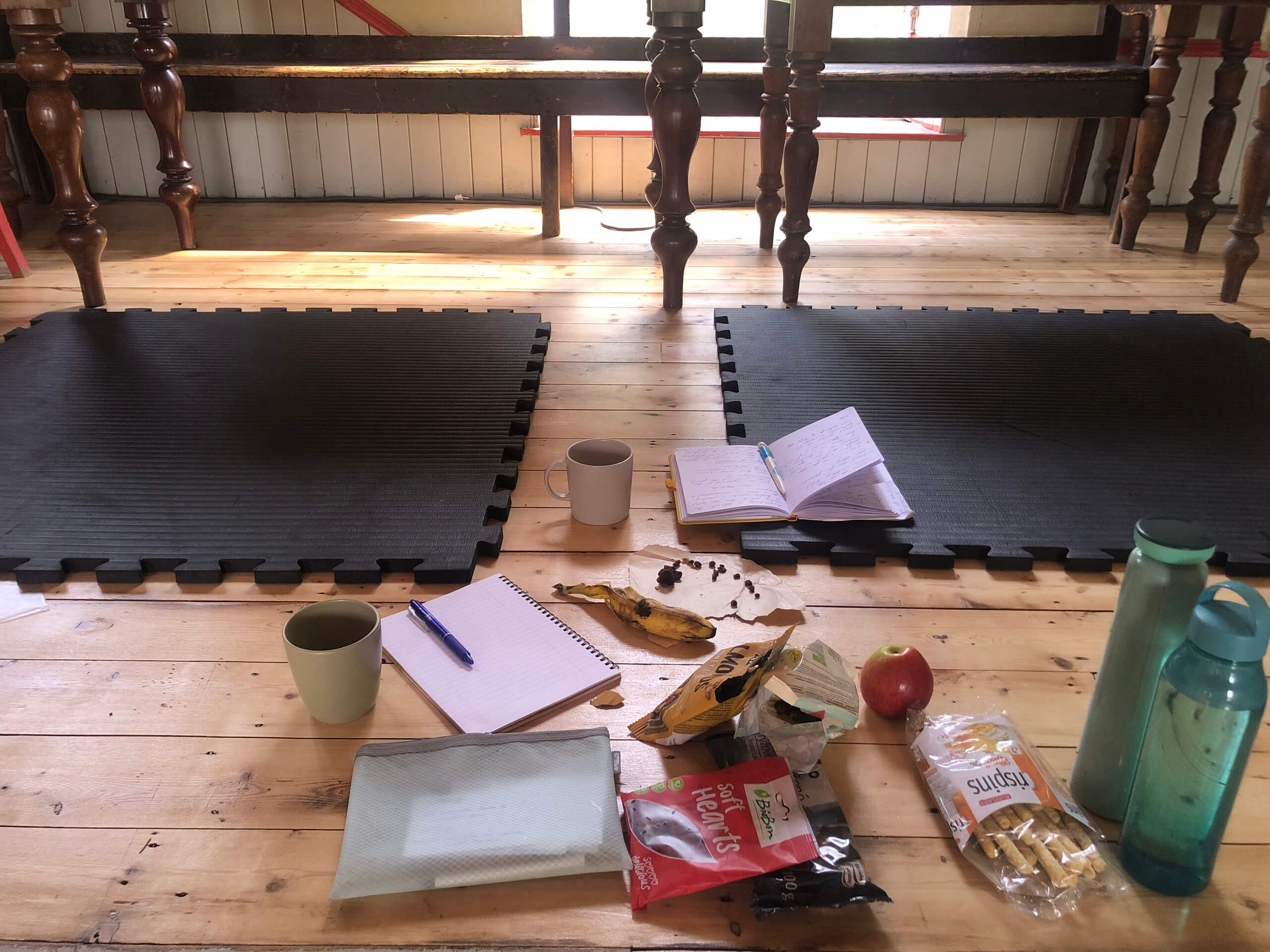Not everything has to be accessible for everyone.

Inclusive Dance Practice: Ways of Translation and Transmission
A research by Judith Hummel and Markéta Stránská
Phase II: Wainsgate Dances (UK), 10–14 June 2025
In the second phase, we deepened our physical research and further developed tasks from the first phase in Munich. The theme of touch became central. We also explored working with “stations” – clearly defined areas where actions could take place individually or in parallel as well as the element of the “Tanzsack” – a fabric cover that envelops the entire body and acts like a second skin. It creates a protected framework within which free movement and the exploration of spatial boundaries and body awareness become possible. We had a sharing with two older women from the local community and exchanged experiences with them.
We were accompanied at times by Charlie Morrissey, with whom we had a conversation about inclusion and accessibility. Through this exchange, we further articulated our approach of researching from an artistic perspective and creating “dancing situations” for all people.
Credits: gefördert mit einem Arbeitsstipendium des Kulturreferats der Landeshauptstadt München.
Moving Mass
Methodology and Research Approach
Our working process for the week was structured around:
- Improvising together.
- Reflecting on the improvisations.
- Selecting key aspects for deeper exploration.
- Finding translations for diverse abilities, ranging from movement specialists to individuals with complex disabilities.
Throughout this phase, we explored themes related to touch. We also experimented with tactile materials such as using a „Tanzsack“ to enrich sensory experiences.
Stations / Islands

Rubbing, squeezing, clapping, brushing, tracing


Developed Tasks
Several tasks emerged and were refined during our research:
- rubbing, squeezing, clapping, brushing, tracing A partner exercise that investigates touch as a two-way physical dialogue, guiding participants through stages from stillness to movement while exploring different touch qualities to deepen body awareness, sensitivity, and perception of giving and receiving.
- Stationary work / Islands A movement task that invites participants to explore different islands or stations in space. Each station offering distinct sensory, emotional, or musical input to encourage individual exploration, creative choice, and awareness of space, texture, and feeling.
- Resting together A partner exercise that explores resting and giving weight through continuous role shifts between support and surrender, fostering proprioception, body awareness, and an understanding of physical structure and balance.
- Moving Mass A movement exploration inside the „Tanzsack“, focusing on sensing, expanding, and moving within a fabric as “second skin” that blurs the body’s visibility, encouraging awareness of boundaries, support, and abstraction while inviting tactile dialogue through finger-point tracing from the outside.

Resting together